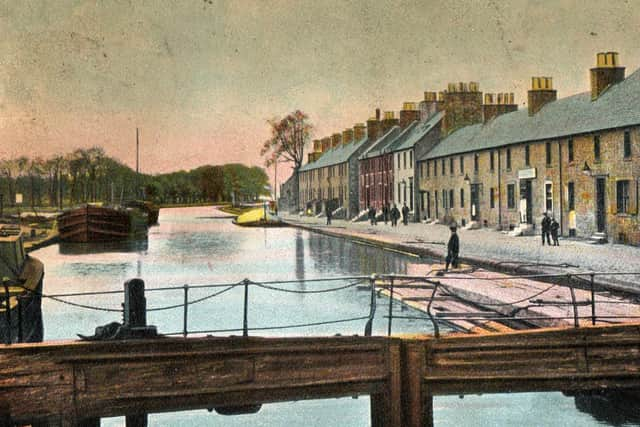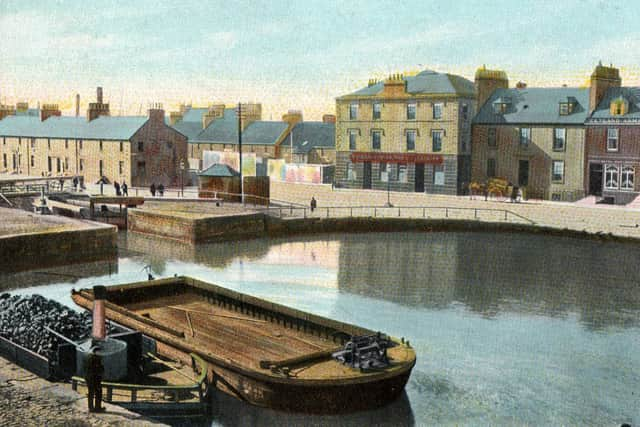Ian Scott: Grangemouth - A thriving community now lost beneath the modern world
and live on Freeview channel 276
Today, very little survives of the thriving trading community that welcomed the world to Scotland and sent the output of coal mine and foundry to the ports of Europe and beyond.
It would be difficult to name another place in Falkirk district which played a bigger part in our history than the point where the River Carron and the Grange Burn met up with the Forth and became the starting point of the Great Canal.
Advertisement
Hide AdAdvertisement
Hide AdIt was on 10th July 1768 that Sir Lawrence Dundas of West Kerse dug the first spade of earth thereby setting in train the mighty construction from Forth to Clyde and launching the real start to the industrialisation of Scotland which had been foreshadowed nine years earlier at Carron.


Sir Lawrence was the largest shareholder in the venture and the owner of the port that arose near the harbour called Sealock for a time, then Grangeburnmouth and finally, by the 1790s, Grangemouth. By then it had boatyards, warehouses, workshops and inns as well as the homes of the 400 or so people settled there between the canal and the river.
There was a little schoolroom in Burnet Street which was replaced in 1808 by the original Zetland School in Middle Street.
Trading vessels from all over Europe landed cargoes of grain, flax, hemp and iron but it was the timber of Scandinavia on which the town’s prosperity was founded.


Advertisement
Hide AdAdvertisement
Hide AdBy 1810 the village had a Customs House of its own and 20 years later demand had reached record levels with 750 vessels each year arriving and leaving and over 3,000 passing through the canal.
Facilities were inadequate and a great improvement scheme was started involving the re-direction of the Grange Burn to take it away from the harbour area.
A new dock, known today as the 'old dock' was built, the river Carron deepened and the major timber basin enlarged.
This work was completed in 1843 by which time the population of the village had grown to over 1,500.
Advertisement
Hide AdAdvertisement
Hide AdEven more rapid growth followed and, less than 20 years later the Junction or Upper Dock was added.
Until 1837 the villagers had no church of their own but in that year the building that became the West Church opposite the canal was dedicated.
It served until 1978 and was demolished eight years later.
Many of the surviving photographs of the old town show two very prominent buildings: the first town hall with its distinctive clock tower built in the 1850s and next door the famous Queens Hotel which provided a different kind of service commonly found in port towns!
Both survived in a ruinous condition until recent years but the clock was rescued from the demolishers and will be restored and displayed in the future.
Advertisement
Hide AdAdvertisement
Hide AdThese buildings faced the two docks which survive, unlike the canal which was removed in the late 1960s.
Sadly Grangemouth was ignored rather than restored by the Millennium project and a great opportunity was lost.
Despite that setback the volunteers who created and sustained Grangemouth Heritage Trust have done a fantastic job of gathering a collection of images and artefacts which help remind us of what was once a thriving community lost beneath the modern roads, warehouses and factory buildings.
Thank you for reading this article on our free-to-read website. We're more reliant on your support than ever as the shift in consumer habits brought about by Coronavirus impacts our advertisers.
Please consider purchasing a subscription to our print newspaper to help fund our trusted, fact-checked journalism.
Comment Guidelines
National World encourages reader discussion on our stories. User feedback, insights and back-and-forth exchanges add a rich layer of context to reporting. Please review our Community Guidelines before commenting.
